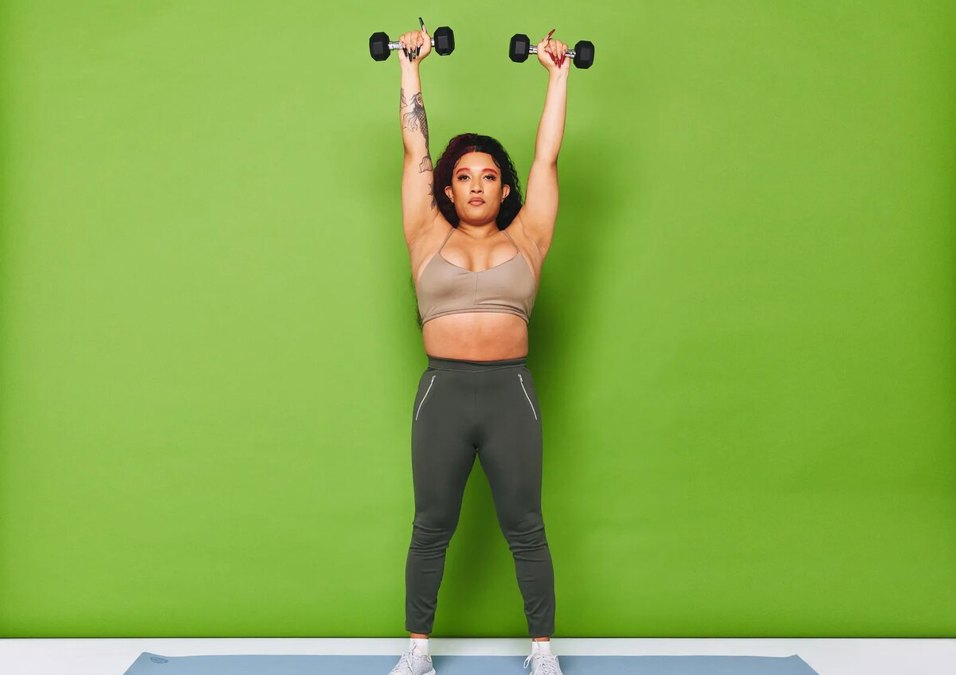7 Key Movements for Your 30s

SIGN UP FOR YOUR FREE DAY PASS TODAY!
Although scrolling through GymTok may suggest otherwise, effective exercise doesn't need to be complicated or extravagant.
While there are many options for different exercises, sticking to the basics is often the best approach, especially as you reach your 30s and beyond.
Turning 30 doesn't mean you're getting old; for many, it marks the start of some of the best years. However, it's also a pivotal time for health and fitness.
"Once people hit their 30s, they start to notice aches and pains and imbalances that they may not have felt in their 20s," says Joe Meier, CPT, personal training leader at Life Time and author of Lift for Life, in SELF magazine.
If you've woken up on your 30th birthday with newfound back pain, you're not alone. Muscles undergo significant changes around this age, and realistically, the joints and tissues supporting them experience more wear and tear as you get older.
Lifestyle changes might also slow you down, making it harder to maintain the same level of activity, leaving you less conditioned and more susceptible to injuries.
In your 20s, you might have had the time and resources to explore new workout trends and classes.
But in your 30s, work responsibilities and family growth can push physical activity lower on your priority list, says Pete McCall, MS, CSCS, exercise science expert and author of Ageless Intensity, in SELF magazine.
"Your responsibilities change," he notes, leading exercise to easily fall down your list.
Experts stress the importance of prioritizing strength training as you age, offering simple ways to make it an essential part of your life.
In your 30s, consistent exercise becomes even more crucial, both now and for the future. It's a perfect time to establish habits that will last into your 40s, 50s, and beyond.
"If you have your habits—say, you go to yoga three times a week or have a favorite fitness studio and classes you take regularly—it’s a part of your life.
It isn't even a second thought," explains McCall. This approach increases the likelihood of fitting intentional movement into a busy schedule.
There are countless reasons to keep moving as you age, all of which aim to maintain functionality and avoid aches and pains.
"Having a good strength routine can help you build and maintain muscle mass, which is critical to maintaining your physical and mental health as you age," says Amy Potter, CPT, personal trainer and strength coach, in SELF magazine.
"Think of muscle mass as your body’s 401(k). Investing time and energy into building a solid strength training routine is an investment in your future health," she adds. Muscle mass supports physical activities, metabolic health, reduces chronic disease risk, and much more.
Without regular strength training or physical activity, adults can lose about 3% to 5% of muscle mass per decade after 30, warns Potter.
Severe muscle loss, known as sarcopenia, can decrease strength, endurance, and mobility, leading to a loss of independence and increased risk of falls and injuries later in life.
A 2017 study found that older adults with low muscle mass were 65% more likely to lose physical independence by age 90 or above, with those having low muscle function being six times more likely.
The good news? You can prevent this decline by starting early.
Incorporating resistance training, maintaining a balanced diet, and staying active are key to preserving muscle mass and promoting overall health, says Potter. Exercise also strengthens bones, reducing the risk of osteoporosis and fractures.
Focusing on essential movement patterns and building your strength workouts around them ensures your routine targets vital muscles and movements for balanced strength and optimal function over time.
Sticking to the basics helps build a strong foundation of strength and stability, setting you up for long-term success without unnecessary complications.
These are the essential movements for your 30s and beyond:
Push
- Importance: Push exercises build upper-body strength, including the chest, shoulders, and triceps, crucial for daily activities like rising from a seated position or lifting things overhead, explains Potter.
- Example: Overhead press, chest press, push-up.
- Try it: Dumbbell shoulder workout, dumbbell chest workout.
Pull
- Importance: Pull movements strengthen the back and biceps, improving posture, preventing pain, and enhancing grip strength, a proxy for overall strength, says Potter.
- Example: Bent-over row, pull-up, lat pull-down.
- Try it: Dumbbell back and biceps workout, kettlebell back workout.
Hinge
- Importance: Hinge exercises work the glutes, hamstrings, and core, supporting functional movement and reducing injury risk, says Potter.
- Example: Romanian deadlift, glute bridge, kettlebell swing.
- Try it: Squat-free butt workout, 10-minute kettlebell glute workout.
Squat
- Importance: Squatting is key for daily activities like sitting, standing, and climbing stairs, crucial for independence, says Potter.
- Example: Goblet squat, suitcase squat, sumo squat.
- Try it: Lower-body workout, bodyweight legs and abs workout.
Single-Leg
- Importance: Single-leg exercises improve balance and stability, reflecting daily life movements like stair climbing, says Meier.
- Example: Forward to reverse lunge, single-leg deadlift, split squat.
- Try it: Dumbbell legs workout, bodyweight lower-body workout.
Rotate
- Importance: Rotation exercises strengthen the core and support daily activities requiring rotational strength, says Potter.
- Example: Windmill, rotational medicine ball toss, wood-chop.
- Try it: Kettlebell workout, dumbbell core and arms workout.
Core Stability
- Importance: Core stability is crucial for injury prevention and overall core strength, which enhances posture and functional movements in daily activities. Exercises like anti-rotation, anti-flexion, and anti-extension help build this stability, aiding in everyday tasks such as carrying groceries or balancing on a moving train.
- Example exercises: Different plank variations (as shown above); suitcase carry; Pallof press.
- Try it out: Check out this kettlebell abs workout and this plank and squat workout.
Source: self
The opinions shared in the GymNation blog articles are solely those of the respective authors and may not represent the perspectives of GymNation or any member of the GymNation team.












































































